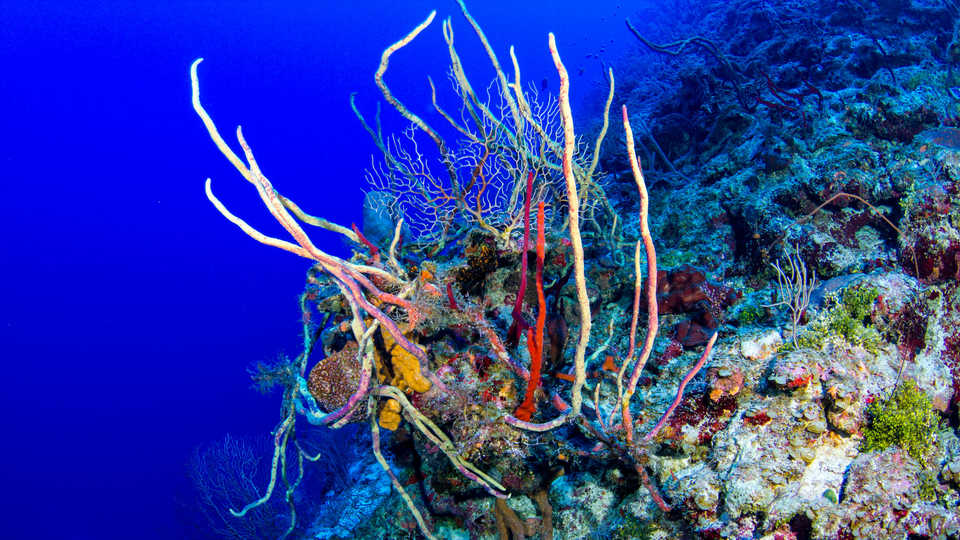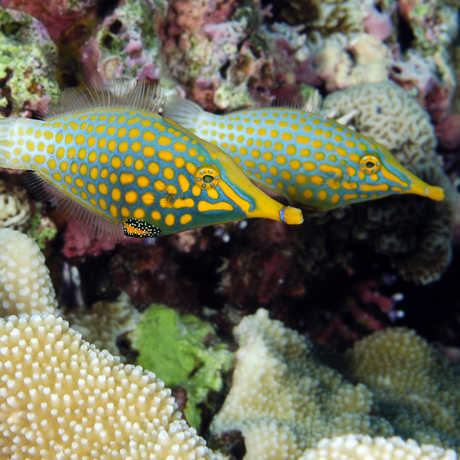Check out our press release for more stories behind the science of this year's 213 new species.
Scientific name: Plectranthias hinano
Family: Serranidae (includes anthias, sea bass, and grouper)
Discovered in: French Polynesia
Described by: Bart Shepherd, Senior Director of Steinhart Aquarium; Luiz Rocha, PhD, Curator and Follett Chair of Ichthyology; and collaborators
This vibrant little fish inhabits MCEs (Mesophotic Coral Ecosystems) in the Central Pacific Ocean at depths of around 300 feet. A team of deep-diving scientists collected a specimen using SubCAS, a groundbreaking Academy invention designed to safely transport fish from ocean depths to sea level. Travel plans not taking you to Tahiti anytime soon? Look forward to experiencing a kaleidoscopic array of mesophotic species in the Twilight Zone exhibit when the Academy reopens.
















